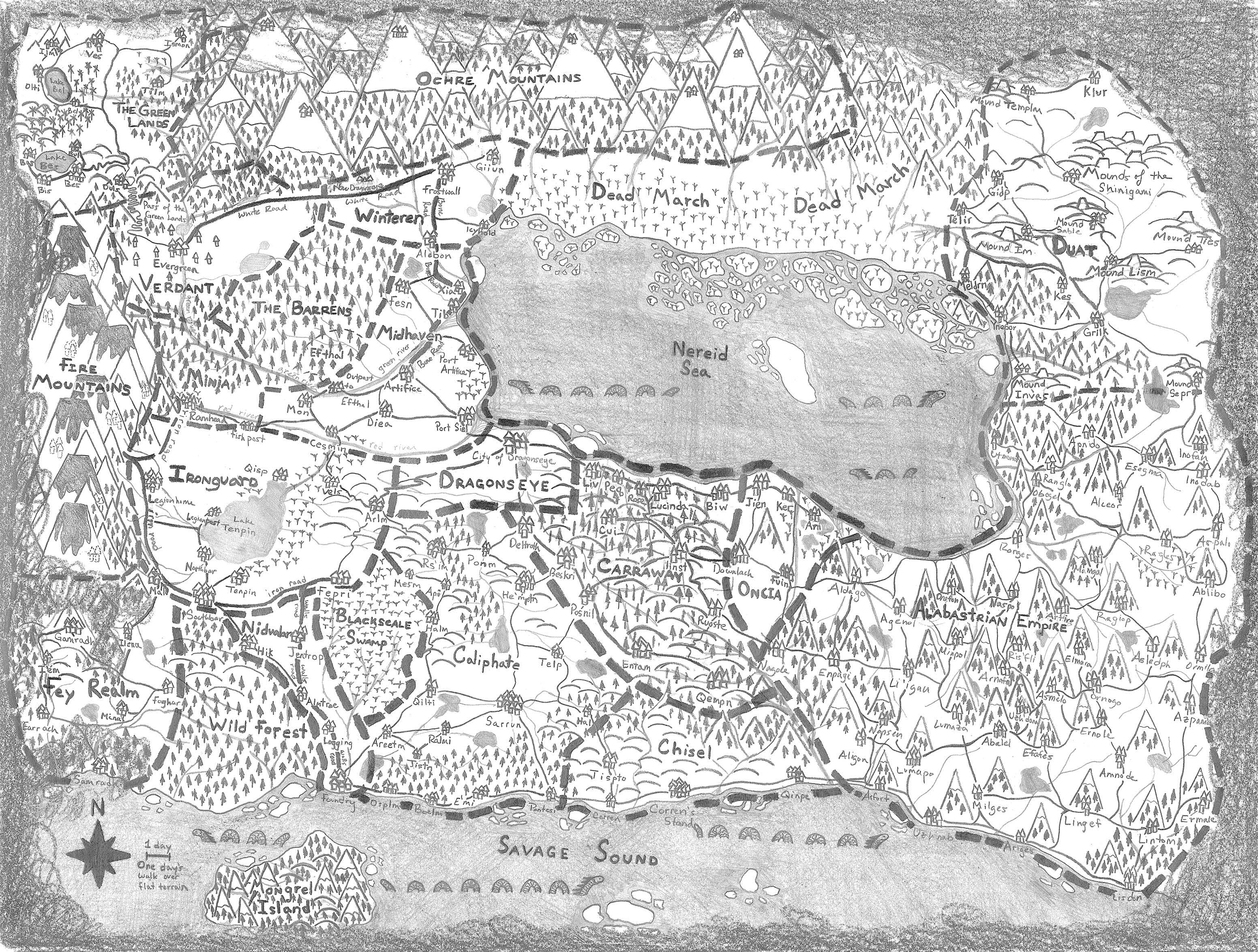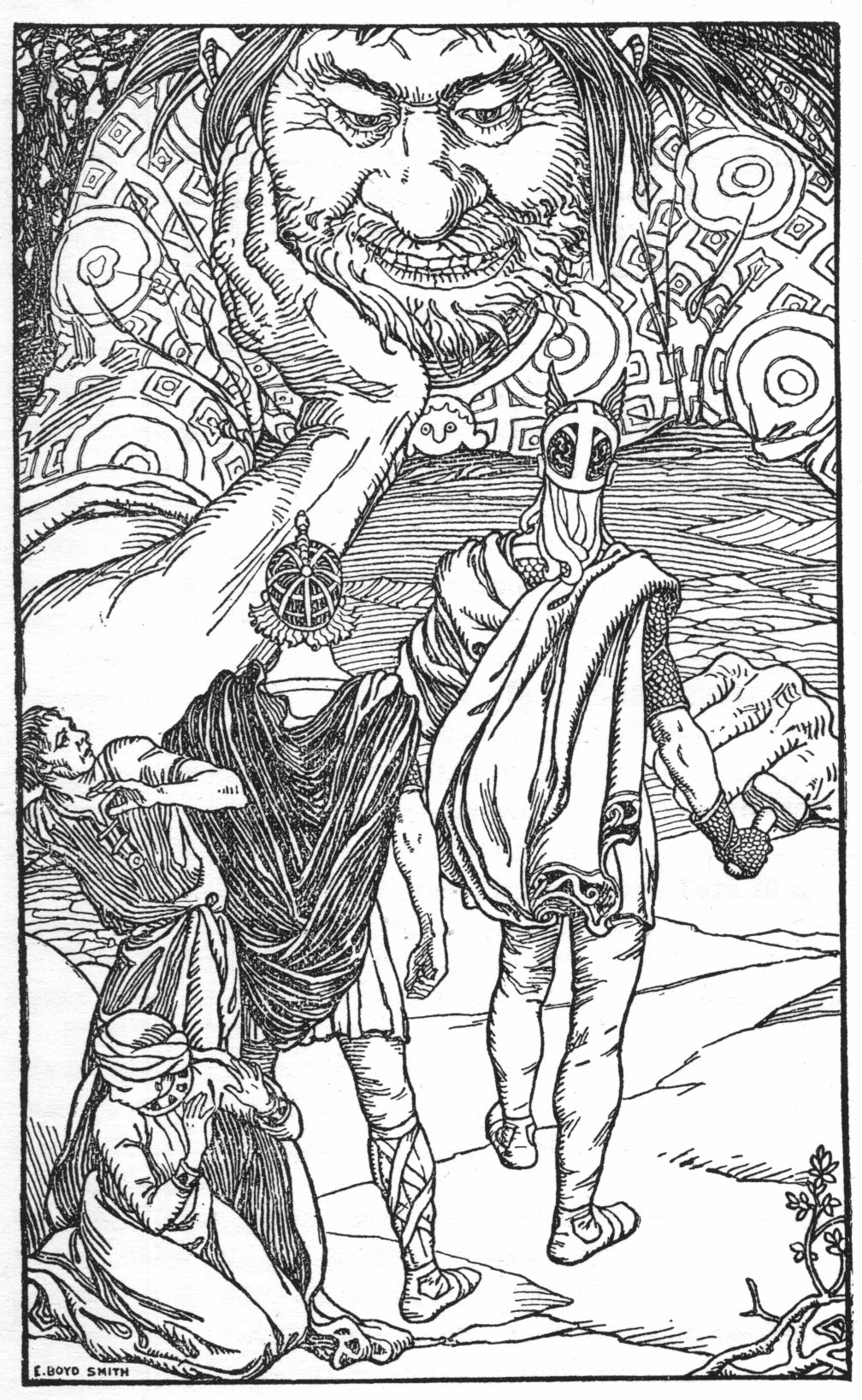Patronage (4e Campaign Setting)
| This is complete in many aspects, but information is sparse in a few categories. Please help improve this.
What are the rating guidelines in more detail? |
Patronage is where the "gods", such as they are, walk the earth amongst their subjects. These are not gods in the conventional sense. Rather, they are immensely powerful immortal creatures, with great knowledge and ruthless ambition. The lesser races cower in their presence, either hoping for their Patrons' benevolence, or dreading their Patrons' malevolence.
Mechanical Notes[edit]
Patronage is atypical of many campaign worlds created for Dungeons & Dragons in several respects. The major differences are detailed briefly below:
Godless: There are no gods or primal spirits in Patronage. Rather, the world is dominated by the "Patrons", powerful beings akin to gods, but who walk the earth in physical form. Because the cosmology is so different from the default "Points of Light" setting in 4th edition, it may be confusing on how to build a back story for a warlock, or for a primal or divine class, I have a short article on translating character concepts and power sources into the Patronage Campaign Setting.
Universal: Just as there are no gods, there are also no alternate planes. Patronage exists on one continent on one world. While there are pocket dimensions (and thus bags of holding and rituals of rope trick ), there is no cosmology, no Astral Sea, no Feywild, no Elemental Chaos, etc. Therefore, any ritual or power that involves travel to another plane will not operate. (Eladrin and other forms of teleportation however, work fine) Players should be careful about selecting Paragon Paths and Epic Destinies that would normally grant transdimensional powers. Instead of planes, there are realms on the world where creatures from those planes dwell. These are physical places, and can be reached through conventional means.
Reclassified Races: While pretty much any playable race can fit in Patronage, each race (except humans and warforged) is grouped into one of 18 categories of "noble" and "base" races. (The Patrons are not playable races, rather they are groupings of all the epic-tiered intelligent creatures that might exist in the game). When people refer to a character's race in-game, they will refer to this classification. For example, both gnolls and kenku are considered to be breeds of "shedu", the noble race created by the anthropophagi. Characters will refer to these characters as "shedim" (the plural of shedu), and treat them as if they came from the same race.
No Interbreeding: One consequence of the racial classifications is that half-orcs, half-elves, and any other races that are described as an offshoot of parents of different race breed true in Patronage. They are not the result of mating between two individuals of different races. In fact, in Patronage, races are unable to interbreed. An elf who marries a human will bear no offspring from the union. However, two creatures who are different breeds within the same race can interbreed, and the result could result in a child of either parents' breeding. For example, if a gnoll and a kenku (both considered shedim) mate, the offspring could be either a kenku or a gnoll. The mating, however, would not result, for example in a breed of shedu that is of neither parent (such as a shifter).
Landbond: The lands of Patronage are unusually hard to farm, and were inhospitable when first created (or found as some speculate) by the Patrons. The Patrons developed the landbond rituals to support agriculture. Landbonding binds a ruler to the land, but the link allows the land to be farmed by those who swear fealty to the monarch. The ritual helps to preserve a feudal system, a result the Patrons no doubt intended.
Setting-Specific Mechanics: There are also several new mechanics designed for Patronage in the following categories:
Tier-Based Design: Patronage is designed so that adventures can easily be categorized by tier. Adventure seeds can be found throughout Patronage's environments.
- Heroic adventures usually take place within a single Free Kingdom or Wild Land, or on behalf of a society. Adventurers, of course, may travel where they will, but an entire heroic phase of a campaign could be held within any of the Free Kingdoms or Wild Lands.
- Paragon adventures usually take place either within a Patron Realm, or in the form of conflict between the Free Kingdoms or societies within the Free Kingdoms. Paragon adventurers should have sufficient power and renown to deal directly with the powers who control the Free Kingdoms and societies.
- Epic adventures usually take place in the form of conflict either among Patron Races or between the Patrons and the Free Kingdoms. Epic adventurers should have already reshaped the mortal realms of the Free Kingdoms and can now take the fight directly to the Patrons themselves.
The Patrons and Their Subjects[edit]
According to accepted history, the Patrons created the World of Patronage and all living creatures within it. Philosophers and historians generally accept that there were, or are, nine Patron races. There are some who say the Patrons came from elsewhere, and found this land and populated it. If that is true, then it informs one of the question: from where did they come?
The Patrons divided their servile races into those noble races that could be entrusted with discretion and authority, and those base races that were built for more menial or dangerous tasks. In actuality, the nine noble races and the nine base races (one for each Patron) are each groupings of many races. Mysteriously, some races, without any ties to a Patron have appeared. Scholars are uncertain from where these races came and what their appearance portends. The Patrons have been silent about these new "wild" races, which concerns the scholars all the more.
| Patron | Anthropophage | Avatar | Dragon | Elemental | Fey | Leviathan | Oni | Shinigami | Titan | None |
|---|---|---|---|---|---|---|---|---|---|---|
| Noble | Shedu | Deva | Halfling | Genasi | Elf | Deep One | Orc | Ghilan | Ogre | Human |
| Base | Ravin | Eidolon | Sparti | Dwarf | Goblin | Voidianoi | Half-orc | Wight | Goliath | Warforged |
Places and Organizations[edit]

Those places where the Patrons still hold dominion are known as the "Realms", while those places where the Patrons have retreated or disappeared, and are currently dominate by the noble and base races are called the "Free Kingdoms". The Mists are the mysterious fog that bounds the perimeter of Patronage.
|
Realms
|
Free Kingdoms
|
Wild Lands
|
|
|
Other
|
History[edit]
Historians generally separate the history of Patronage into six ages, though history often reveals itself to be incapable of such bright lines.
|
I The Innocent Age |
II The Lost Age |
III The Chaotic Age |
IV The Xalian Age |
V The Juzhian Age |
VI The Xarlemi Age |
Back to Main Page → 4e Homebrew → Campaign Settings
